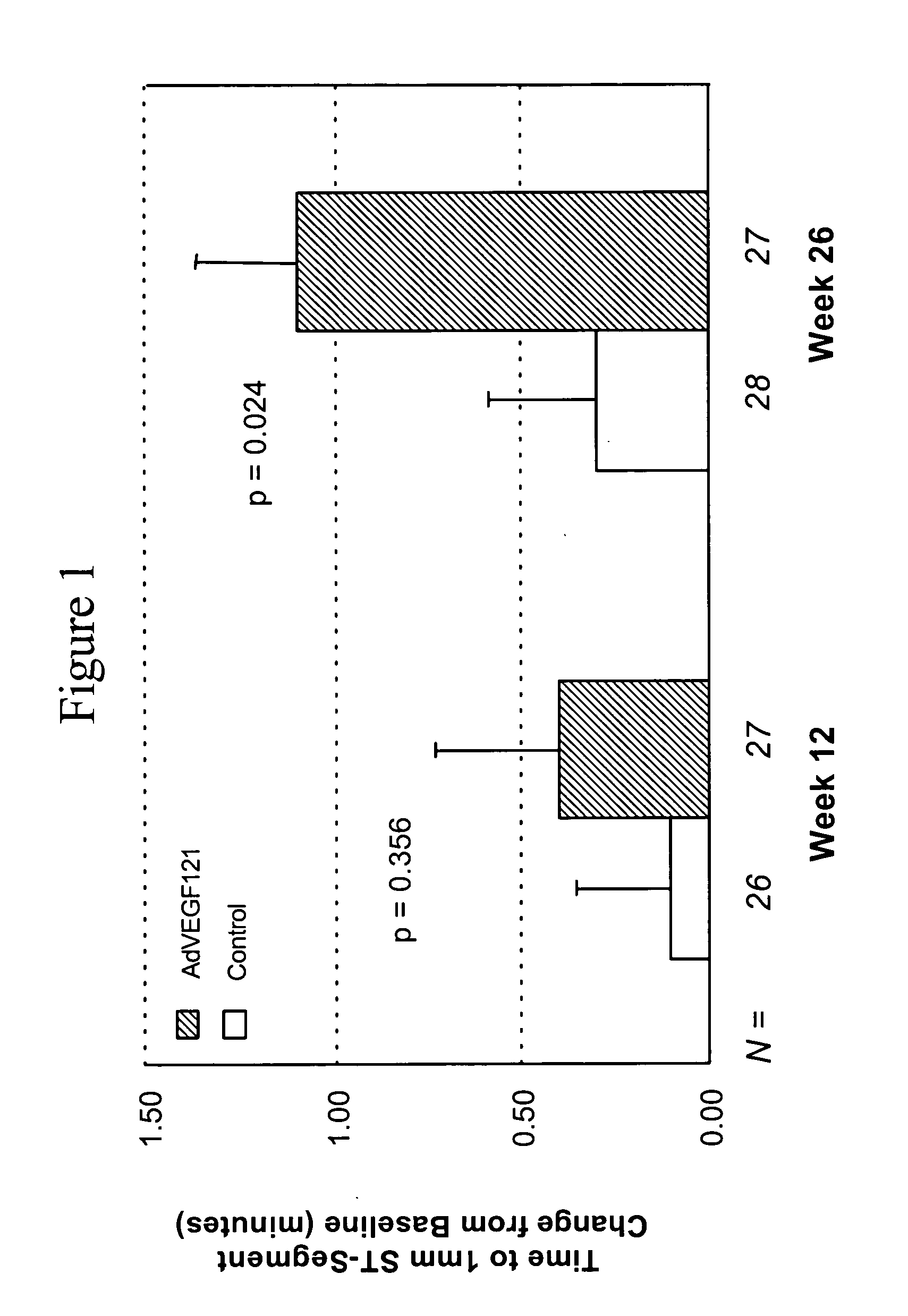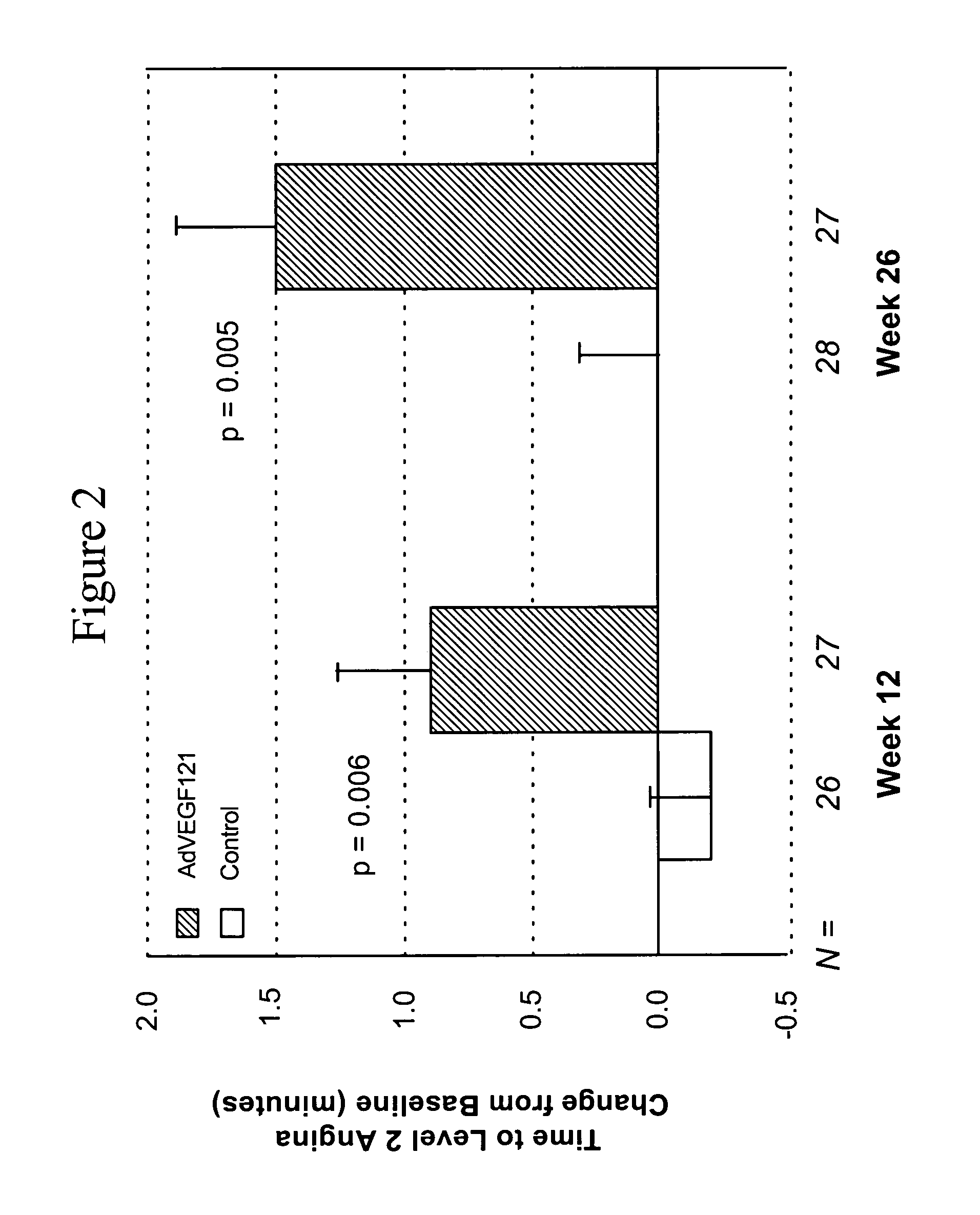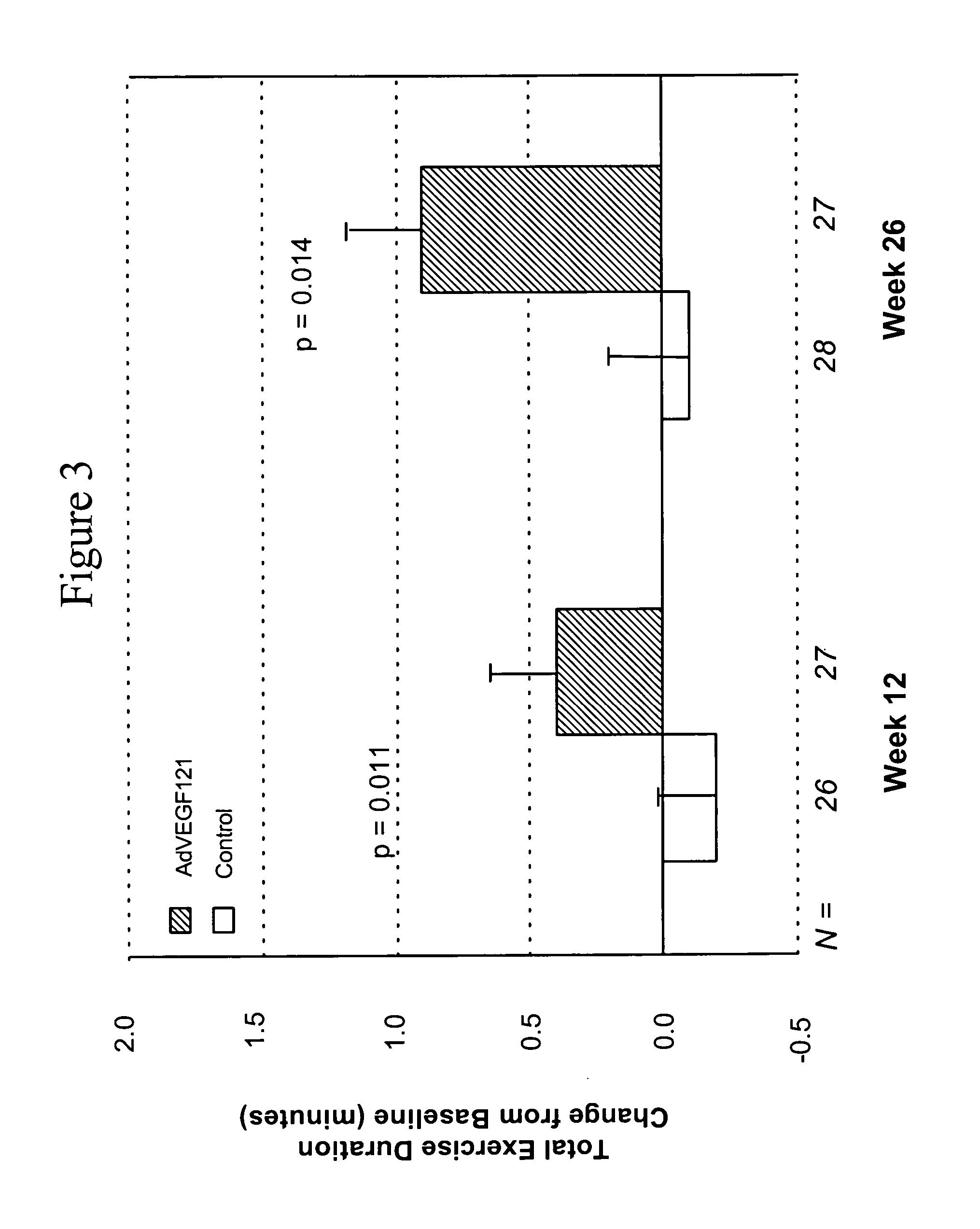Coronary artery disease treatment
- Summary
- Abstract
- Description
- Claims
- Application Information
AI Technical Summary
Problems solved by technology
Method used
Image
Examples
example 1
[0072] This example demonstrates the safety and efficacy of a pharmaceutical composition of the invention delivered through minimally invasive surgery versus maximum medical treatment in the treatment of patients suffering from advanced coronary artery disease, as measured by comparing time to onset of at least 1 mm ST-segment depression before and after treatment in accordance with the invention.
[0073] Patients were screened to allow initial assessment of qualification for randomization into the study (i.e., those with stable and severe angina). Baseline values were established for each qualified patient with respect to exercise electrocardiogram (ECG), (i.e., time to onset of at least 1 mm ST-segment depression), exercise tolerance test (ETT), 99mTc-sestamibi SPECT (i.e., summed stress score, summed reversibility score, and global wall motion scores), Canadian Cardiovascular Society (CCS) angina class, and the Seattle Angina Questionnaire (SAQ) response.
[0074] 67 patients (i.e.,...
example 2
[0081] This example demonstrates the safety and efficacy of a pharmaceutical composition of the invention delivered through minimally invasive surgery versus maximum medical treatment in the treatment of patients suffering from advanced coronary artery disease, as measured by comparing time to onset of Level 2 angina or termination of the exercise tolerance test (ETT) in the absence of Level 2 angina before and after treatment in accordance with the invention.
[0082] Patient screening, enrollment, treatment, and response, as well as statistical testing, were conducted as described in Example 1. All reported p-values compare results between treatment groups. Group A included 27 patients and Group B included 29 patients, although evaluable data was not available for all patients at all time points. A parameter used to assess the efficacy of the treatment was the change in time to onset of Level 2 angina or termination of ETT in the absence of Level 2 angina at 12 weeks and 26 weeks po...
example 3
[0083] This example demonstrates the safety and efficacy of a pharmaceutical composition of the invention delivered through minimally invasive surgery versus maximum medical treatment in the treatment of patients suffering from advanced coronary artery disease, as measured by comparing time of total exercise duration during the exercise tolerance test (ETT) before and after treatment in accordance with the invention.
[0084] Patient screening, enrollment, treatment, and response, as well as statistical testing, were conducted as described in Example 1. All reported p-values compare results between treatment groups. Another parameter used to assess the efficacy of the treatment was the change in time of total exercise duration during ETT at 12 weeks and 26 weeks post-treatment, as compared to time of total exercise duration during ETT before treatment (i.e., baseline). The mean time of total exercise duration during ETT before treatment was 5.6 minutes for Group A and 5.4 minutes for ...
PUM
| Property | Measurement | Unit |
|---|---|---|
| Length | aaaaa | aaaaa |
| Length | aaaaa | aaaaa |
| Fraction | aaaaa | aaaaa |
Abstract
Description
Claims
Application Information
 Login to View More
Login to View More - R&D
- Intellectual Property
- Life Sciences
- Materials
- Tech Scout
- Unparalleled Data Quality
- Higher Quality Content
- 60% Fewer Hallucinations
Browse by: Latest US Patents, China's latest patents, Technical Efficacy Thesaurus, Application Domain, Technology Topic, Popular Technical Reports.
© 2025 PatSnap. All rights reserved.Legal|Privacy policy|Modern Slavery Act Transparency Statement|Sitemap|About US| Contact US: help@patsnap.com



